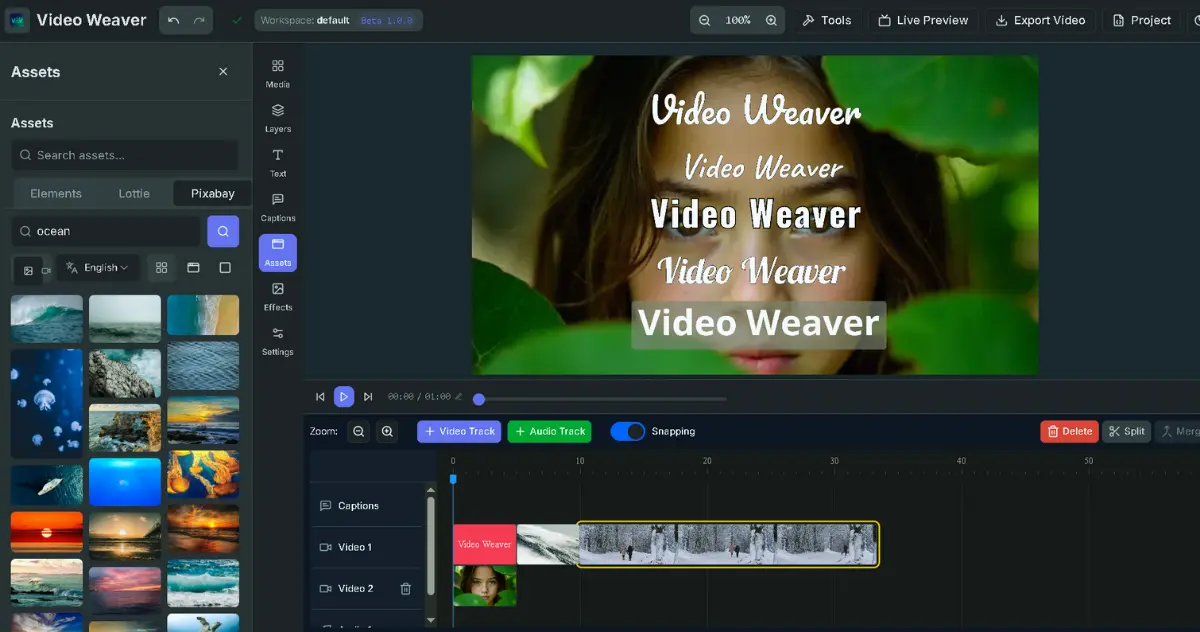Reaching New Heights in AI Drawing: ByteDance's USO Model, Style and Subject No Longer a Trade-off
AI drawing has once again welcomed major news! ByteDance recently open-sourced an innovative AI image generation framework called USO, which cleverly integrates the two seemingly opposing tasks of ‘style-driven’ and ‘subject-driven’ into a single model. This means that in the future, users will no longer have to struggle between preserving clear character features and rendering unique artistic styles. The emergence of USO makes it possible to have both, greatly improving the freedom and accuracy of AI drawing.
Have you ever had this experience? You want to use AI to draw a picture of a specific friend, but in the style of a Van Gogh oil painting. The resulting image either has a distorted face of your friend or the style rendering is a poor imitation. This struggle between “staying true to the original” and “pursuing style” has been a pain point for many AI drawing enthusiasts.
However, this long-standing problem for creators now has a new solution. ByteDance’s research team has launched and open-sourced a unified generation framework called USO (Unified Style and Subject-Driven Generation), directly challenging this “you can’t have your cake and eat it too” problem.
In simple terms, USO is like a highly skilled painter who can both accurately capture the spirit of a model and switch between various painting styles at will.
Why is this technology so important? The century-old debate between style and subject
In the past, in the field of AI image generation, it was customary to treat “style-driven” and “subject-driven” as two parallel lines.
- Style-driven: Focuses on learning and replicating the texture, brushstrokes, and colors of a specific artistic style, such as turning a regular photo into a cyberpunk style. But the disadvantage is that the details of the subject (such as a human face) in the original image are easily distorted during the stylization process.
- Subject-driven: The primary goal is to maintain the consistency of the subject (such as a person, pet, or object), ensuring that the subject’s features are clearly identifiable no matter how the background changes. But in this mode, it is difficult to incorporate a strong artistic style.
The contradiction between these two stems from the model’s difficulty in judging which features belong to “content” and which belong to “style.” The core concept of USO is to break down this wall and teach the model to “deconstruct” and “reconstruct” intelligently.
Unveiling the magic behind USO: Decoupling and Reward Learning
So, how does USO do it? The researchers proposed several key innovative methods:
Large-scale “triplet” dataset: First, they created a huge database containing a three-piece combination of “content image,” “style image,” and “stylized content image.” This is like providing the AI with countless learning examples, allowing it to learn the mystery of combining content and style by comparison.
Disentangled Learning: This is the core technology of USO. Through a sophisticated algorithm design, the model is trained to distinguish which parts of an image are about “subject content” (such as a person’s facial features, clothing contours) and which are about “style features” (such as brushstrokes, tones). Through two complementary training methods, “style alignment” and “content-style decoupling,” USO can separate the two beautifully.
Style Reward-Learning: To take the generation effect to the next level, the team also introduced a mechanism similar to a “taste mentor.” This mechanism evaluates the style similarity of the generated images and gives the model rewards or guidance, continuously improving its mastery of style.
It is worth mentioning that the USO model is fine-tuned based on the powerful base model FLUX.1-dev and provides LoRA weights, allowing developers with technical capabilities to apply and customize it more flexibly.
Four ways to play, unleashing your infinite creativity
USO is not just a technical concept, it also provides four very practical inference modes that cover almost all mainstream AI drawing needs:
- Precise subject control: Upload a photo of a person, and you can use a text prompt to make them appear in any scene while perfectly preserving their facial features, with results comparable to a photo shoot.
- Flexible style transfer: With just one style reference image, whether it’s the feel of a Ghibli animation, a retro comic style, or the hazy beauty of a watercolor painting, you can apply it to your photos with one click while maintaining the original layout.
- IP-style hybrid creation: This is the most exciting mode. You can upload a “subject image” (such as your pet dog) and a “style image” (such as a starry sky oil painting) at the same time, and USO can generate a fantasy painting of your dog running under the starry sky.
- Multi-style fusion generation: Still hesitating about which style to use? USO even supports referencing multiple style images at the same time to create a unique mixed art effect (this feature is currently under testing).
Experience the charm of USO for yourself
After all this talk, why not try it yourself! ByteDance has very thoughtfully provided an online demo of USO on the well-known AI developer community Hugging Face. You don’t need to know how to code, just upload images, enter simple commands, and you can immediately experience the creative fun brought by this advanced technology.
Online experience portal: USO Hugging Face Demo
For developers interested in in-depth research, the complete code and model weights of USO are also open source on GitHub and can be freely downloaded and used.
Conclusion: The next milestone in AI creation
USO model’s appearance not only solves a technical problem, but it also symbolizes that AI image generation is developing in a more refined, freer, and more creator-aware direction. The era of repeatedly “drawing cards” and relying on luck to get satisfactory results is passing. In the future, AI will become a more obedient and powerful creative partner, helping us to accurately transform every whimsical idea in our minds into reality.




